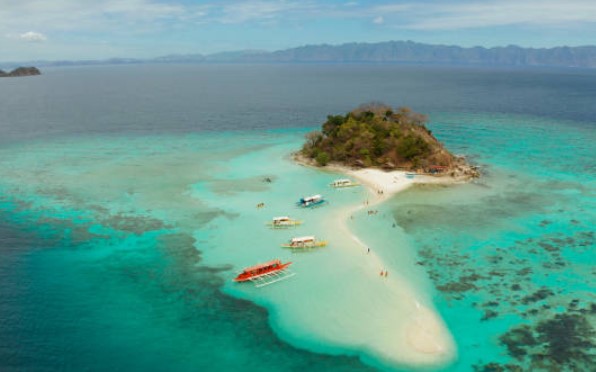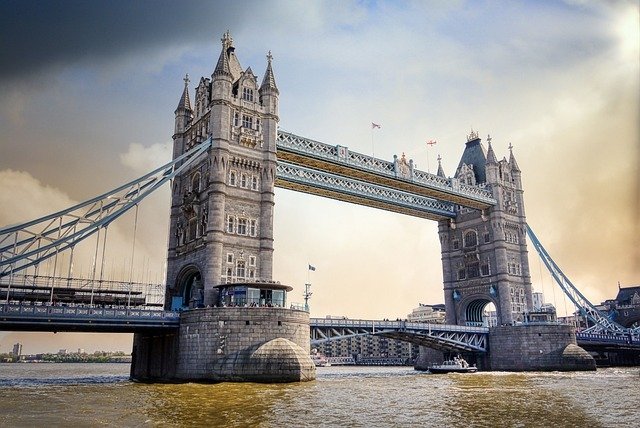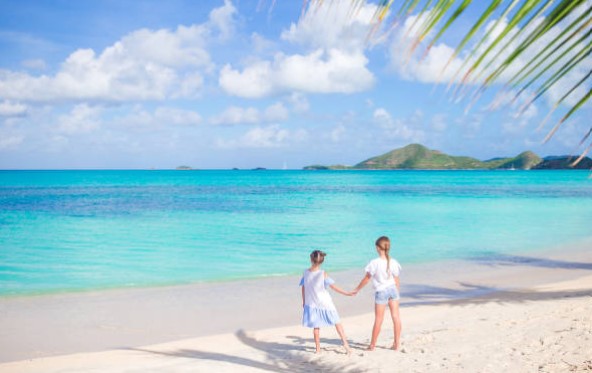The Philippines, an archipelago of over 7,000 islands, is renowned for its stunning beaches, vibrant marine life, and breathtaking landscapes. Let’s journey to discover the Top 10 Smallest Islands in the Philippines While many travelers flock to popular destinations like Boracay and Palawan, there’s a unique charm in exploring the smaller, lesser-known islands that dot the Philippine Sea. These tiny havens offer tranquility, seclusion, and a glimpse into the untouched beauty of the archipelago. Where paradise takes on a whole new meaning.
Unveiling the Hidden Gems: The Top 10 Smallest Islands in the Philippines
When we think of the Philippines, images of sprawling beaches and bustling tourist spots often come to mind. But nestled amidst the vast expanse of the ocean are diminutive islands, each a jewel in its own right. These islands, often overlooked, offer an intimate experience with nature, far removed from the crowds. They are sanctuaries of peace, where time seems to slow down and the simple pleasures of island life take center stage. This blog will guide you through the Top 10 smallest islands in the Philippines, highlighting their unique characteristics and why they deserve a spot on your travel bucket list.
Exploring the Intimate Wonders: A Closer Look at the Smallest Islands
These tiny islands, often accessible only by boat, are havens of biodiversity and cultural richness. They range from sandbars that emerge only during low tide to rocky outcrops teeming with marine life. Each island offers a unique experience, whether it’s snorkeling in crystal-clear waters, observing rare bird species, or simply enjoying the solitude of a secluded beach.
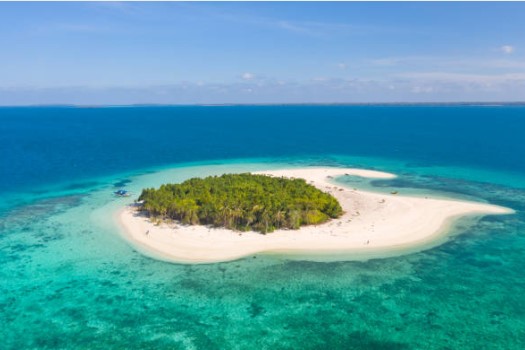
1. Naked Island, Siargao:
Naked Island is the epitome of minimalist beauty. Imagine a pristine white sandbar rising from the turquoise waters of the Philippine Sea. With no vegetation or structures, it’s a blank canvas for sun worshippers and photographers alike. The sheer simplicity of this island is its allure. You can wade in the shallow, warm waters, bask in the sun, or simply marvel at the unobstructed 360-degree views of the surrounding ocean. The absence of shade means you’ll need to be prepared for intense sunlight, but the experience of being on such a pure, untouched slice of paradise is truly unforgettable.
- Travel Tips: The Top 10 Smallest Islands in the Philippines, Bring plenty of sunscreen, a hat, and sunglasses. Consider bringing a beach umbrella for shade. Pack snacks and water, as there are no facilities on the island. Check the tide schedule to ensure you visit during low tide.
2. Dako Island, Siargao:
Dako Island, meaning “big” in the local dialect, is a charming contrast to its bare neighbor. While still small, it offers a glimpse into local island life. A small fishing village nestled among swaying coconut trees provides a sense of community. The island boasts a beautiful white sand beach perfect for swimming and relaxing. You can watch local fishermen bring in their daily catch, enjoy fresh seafood cooked on the spot, and immerse yourself in the laid-back island atmosphere. The shallow waters surrounding the island are ideal for snorkeling, revealing a vibrant underwater world.
- Travel Tips: Try the fresh seafood prepared by local vendors. Respect the local community and their way of life. Bring insect repellent, especially during the evening. Explore the island’s interior for hidden spots and scenic views.
3. Luli Island, Palawan:
Luli Island is a living testament to the dynamic dance between land and sea. It’s a place where the very definition of “island” is fluid, a transient realm that exists in a state of perpetual transformation. The name itself, “lulubog” and “lilitaw,” a local expression, encapsulates this ephemeral nature. At high tide, Luli Island is a submerged secret, a hidden world beneath the waves. As the tide recedes, however, the sandbar emerges, revealing a pristine expanse of sand that seems to materialize from the depths of the ocean.
This process of disappearance and reappearance creates a sense of wonder and intrigue, making each visit a unique encounter with nature’s ever-changing rhythms. The sand, when revealed, is a platform of opportunity. The surrounding waters, untouched and pristine, become a stage for underwater exploration.
The clarity of these waters is exceptional, offering a window into a vibrant marine ecosystem. Beneath the surface, a kaleidoscope of marine life thrives, a world of colorful corals and diverse fish species. The experience of snorkeling here is akin to discovering a hidden garden, a submerged realm of beauty and tranquility. The feeling of being on the island is one of being connected to the ocean’s natural rhythm.
Travel Tips: The Top 10 Smallest Islands in the Philippines
- Embrace the Tidal Rhythm:
- The essence of Luli Island lies in its tidal nature. Plan your visit with a keen awareness of the tide schedule. Arrive during low tide to witness the sandbar’s emergence and plan your departure before the tide begins to rise.
- Observe the subtle changes in the landscape as the tide shifts, noting the ebb and flow of the water.
- Prepare for Underwater Exploration:
- The clear waters surrounding Luli Island offer exceptional snorkeling opportunities. Bring your own snorkeling gear or rent it from a local operator.
- Explore the shallow reefs surrounding the sandbar, where you’ll encounter a variety of marine life.
- Take care to not disturb any wildlife.
- Prioritize Foot Protection:
- The texture of the sand on Luli Island can vary, with some areas being coarse or containing sharp shells. Wear water shoes to protect your feet from potential injuries.
- Be Mindful of Your Surroundings:
- Pay close attention to the changing water levels and be aware of potential currents.
- Avoid venturing too far from shore, especially if you are not a strong swimmer.
- Respect the Natural Environment:
- Luli Island is a delicate ecosystem. Avoid littering and refrain from disturbing the marine life.
- Practice responsible tourism by leaving no trace behind.
- Bring Sun Protection:
- The sun reflecting off of the water and sand can be very intense.
4. Snake Island (Vigan Island), Palawan:
Snake Island, also known as Vigan Island, is a truly enchanting destination that exemplifies the breathtaking beauty of Palawan’s Bacuit Bay. Its most distinctive feature, the mesmerizing S-shaped sandbar, is a natural wonder that transforms the island’s landscape with the ebb and flow of the tide. At low tide, this pristine sandbar emerges, creating a picturesque pathway that meanders through the turquoise waters, connecting the island to the mainland. This natural walkway provides an unparalleled opportunity to experience the magic of Bacuit Bay up close, allowing you to walk amidst its crystalline waters and soak in the surrounding scenery.
The panoramic views from Snake Island are simply spectacular. Towering limestone cliffs, characteristic of Palawan’s dramatic landscape, rise majestically from the sea, creating a stunning backdrop. The tranquil lagoons, shimmering in the sunlight, add to the island’s serene atmosphere. It’s a place where you can truly connect with nature, where the gentle lapping of waves and the rustling of leaves create a soothing symphony.
Whether you’re seeking a leisurely stroll along the sandbar, a refreshing dip in the clear waters, or a moment of quiet contemplation amidst the natural beauty, Snake Island offers an unforgettable experience. The feeling of being on the island is one of quite peace, and a magical connection to the surrounding bay.
Travel Tips: The Top 10 Smallest Islands in the Philippines
- Timing Is Key:
- Plan your visit around low tide to fully experience the S-shaped sandbar. Check local tide schedules to ensure you arrive at the optimal time.
- Capture the Memories:
- Bring a camera or smartphone to capture the stunning panoramic views of Bacuit Bay and the surrounding limestone cliffs.
- Consider bringing a waterproof camera or phone case to capture underwater shots of the clear waters and marine life.
- Footwear Matters:
- Wear comfortable shoes or sandals that are suitable for walking on sand and in shallow water.
- Water shoes can provide added protection from sharp shells or rocks.
- Be Mindful of Marine Life:
- While wading in the shallow waters, be aware of sea urchins and other marine creatures. Avoid stepping on or disturbing them.
- Enjoy the marine life from a respectful distance.
- Explore the Surrounding Area:
- Consider combining your visit to Snake Island with other island-hopping tours in Bacuit Bay to discover more of Palawan’s hidden gems.
- Take advantage of local tour guides, they will add valuable infomation to your trip.
- Sun protection is a must.
5. Guyam Island, Siargao:
Guyam Island is the embodiment of a tropical daydream, a miniature world of pure, unadulterated beauty. Imagine a perfectly circular island, a verdant jewel set against the vast expanse of the azure Philippine Sea. The island’s heart is a lush grove of coconut trees, their fronds swaying gently in the sea breeze, creating a natural canopy that provides welcome shade from the tropical sun. The surrounding shoreline is a ribbon of pristine white sand, soft and powdery, that meets the crystal-clear waters in a seamless blend of colors.
The waters themselves are a palette of blues and greens, so clear that you can see the seabed with remarkable clarity. This idyllic setting makes Guyam Island the perfect sanctuary for those seeking respite from the clamor of modern life. It’s a place where time slows down, where the only sounds are the gentle lapping of waves and the rustling of leaves.
It’s a sanctuary for relaxation, a place to simply be. The calm, shallow waters are ideal for leisurely swims and snorkeling, allowing you to explore the vibrant marine life that thrives in the surrounding coral reefs. The island’s diminutive size makes it easy to explore every corner, revealing hidden nooks and secluded spots where you can find your own slice of paradise. The feeling of being on Guyam Island is one of absolute peace.
Travel Tips:
- Embrace the Island’s Tranquility:
- Bring a hammock or a comfortable beach mat to fully appreciate the island’s serene atmosphere. Find a shady spot under the coconut trees and let the gentle sea breeze lull you into a state of relaxation.
- Practice mindfulness and take time to appreciate the simple pleasures of island life, such as the sound of the waves and the beauty of the natural surroundings.
- Create a Perfect Picnic:
- Pack a picnic basket with local delicacies, fresh fruits, and refreshing drinks.
- Find a secluded spot on the beach or under the coconut trees and enjoy a leisurely meal with stunning views.
- Remember to bring a trash bag and leave the island as you found it.
- Respect the Island’s Ecosystem:
- Use reef-safe sunscreen to protect the delicate coral reefs and marine life.
- Avoid stepping on or disturbing coral formations.
- Refrain from collecting shells or other natural souvenirs.
- Support local vendors that practice sustainable tourism.
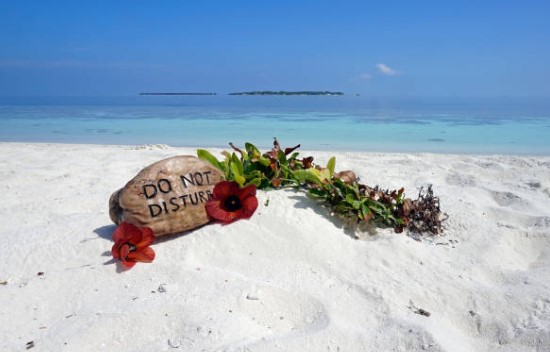
- Enhance Your Snorkeling Experience:
- Bring your own snorkeling gear for a more personalized experience.
- Explore the shallow reefs surrounding the island, where you’ll encounter a variety of colorful fish and other marine creatures.
- Be mindful of the currents and avoid venturing too far from shore.
- Capture the Island’s Beauty:
- Bring a camera or smartphone to capture the stunning scenery and create lasting memories.
- Take photos of the coconut trees, the white sand beach, and the crystal-clear waters.
- Capture the vibrant colors of the sunsets and sunrises.
- Check the weather forecast.
- Bring bug spray.
6. Sumilon Sandbar, Cebu:
The Sumilon Sandbar, a mesmerizing natural wonder nestled off the coast of Sumilon Island in Cebu, is a testament to the dynamic interplay of tides and currents. This ever-shifting stretch of pristine white sand, a ribbon of paradise, undergoes constant transformations, its shape and size dictated by the rhythmic ebb and flow of the sea. This creates a perpetually evolving landscape, ensuring that no two visits are ever quite the same. The sheer beauty of the sandbar, with its powdery white sand and crystal-clear turquoise waters, is enough to captivate any visitor. However, its allure extends beyond its surface.
The surrounding waters, designated as a marine sanctuary, teem with vibrant coral reefs and a diverse array of marine life. This underwater wonderland makes Sumilon Sandbar a haven for snorkeling and diving enthusiasts, who can explore the depths and witness the breathtaking beauty of Cebu’s marine ecosystem. The vibrant colors of the coral, the playful darting of fish, and the serene tranquility of the underwater world create an unforgettable experience. The feeling of being there is one of wonder, and a deep appreciation for the natural world.
Travel Tips:
- Book a Day Trip or Overnight Stay: To fully immerse yourself in the beauty of Sumilon Sandbar and its surrounding attractions, consider booking a day trip or an overnight stay at Sumilon Island.
- Bring Snorkeling or Diving Gear: The marine sanctuary offers exceptional snorkeling and diving opportunities. Bring your own gear or rent it from a local operator.
- Be Mindful of Strong Currents: The currents around Sumilon Sandbar can be strong, so be aware of your surroundings and follow the instructions of local guides.
- Respect the Marine Sanctuary: The marine sanctuary is a protected area. Avoid touching or damaging the coral reefs and marine life.
- Check Tide Schedules: The sandbar’s visibility is dependent on the tides, so check tide schedules before your visit.
- Pack Sun Protection: The tropical sun can be intense, so bring high SPF sunscreen, a hat, and sunglasses.
- Bring Water and Snacks: While there are facilities on Sumilon Island, it’s advisable to bring your own water and snacks.
- Explore Sumilon Island’s Other Attractions: Sumilon Island offers a range of other attractions, including a lighthouse, a natural lagoon, and hiking trails. Take time to explore the island and discover its hidden gems.
- Bring a waterproof camera. There are many wonderful photo opportunities both above and below the water.
7. Manlawi Sandbar, Camarines Sur:
Manlawi Sandbar, a hidden gem nestled within the coastal wonders of Camarines Sur, is a testament to the dynamic beauty of the Philippine tides. As the sea recedes, a sprawling expanse of pristine white sand emerges, transforming the landscape into a vast, sun-drenched playground. This ephemeral sandbar, a canvas of soft, powdery sand, stretches as far as the eye can see, creating a sense of boundless space and tranquility. The sheer scale of Manlawi Sandbar makes it a unique destination, offering ample room for a variety of activities, from leisurely walks and sunbathing to beach games and picnicking.
The surrounding waters, rich in marine life, are a haven for local fishermen, who can often be seen casting their nets and hauling in their daily catch. This adds a touch of authenticity to the experience, allowing visitors to witness the traditional fishing practices of the region.
The panoramic views from Manlawi Sandbar are simply breathtaking. The surrounding mountains, shrouded in lush greenery, provide a dramatic backdrop, while the vast expanse of the ocean stretches out to the horizon, creating a sense of peace and serenity. The interplay of sunlight and shadow on the sand and water creates a mesmerizing visual spectacle, making Manlawi Sandbar a photographer’s dream. The feeling of being on the sandbar is one of open space and a wonderful feeling of freedom.
- Travel Tips: The Top 10 Smallest Islands in the Philippines
- Time Your Visit for Low Tide: To fully experience the grandeur of Manlawi Sandbar, plan your visit during low tide. Check local tide schedules to ensure you arrive at the optimal time.
- Indulge in Local Seafood: After exploring the sandbar, treat yourself to a delectable seafood feast at a nearby restaurant. Camarines Sur is known for its fresh and flavorful seafood dishes.
- Protect Yourself from the Sun: The tropical sun can be intense, so bring a wide-brimmed hat, high SPF sunscreen, and sunglasses to shield yourself from harmful UV rays.
- Bring Water and Snacks: While local vendors may be present, it’s advisable to bring your own water and snacks, especially if you plan to spend an extended period on the sandbar.
- Explore the Surrounding Area: Camarines Sur offers a wealth of natural attractions, including waterfalls, hot springs, and other beautiful beaches. Consider exploring the surrounding area to maximize your trip.
- Engage with Local Fishermen: If you have the opportunity, engage with local fishermen and learn about their traditional fishing practices.
- Respect the Environment: Avoid littering and damaging the natural surroundings. Practice responsible tourism by leaving no trace behind.
- Bring a Camera: The scenic views and unique landscape of Manlawi Sandbar make it a photographer’s paradise.
- Check the local weather. The weather can change quickly.
8. Gigantes Islands Sandbars, Iloilo:
The Gigantes Islands, an archipelago scattered across the Visayan Sea, are a hidden gem of the Philippines, renowned for their untamed beauty and secluded charm. Among their many treasures are the ephemeral sandbars that emerge with the ebb of the tide, transforming the seascape into a mesmerizing tableau. These sandbars, stretches of pristine white sand, appear like fleeting pathways across the turquoise waters, offering a sense of wonder and adventure. What makes these sandbars truly unique is their backdrop: dramatic rock formations, sculpted by centuries of wind and waves, rise from the sea, creating a rugged and picturesque landscape.
The contrast between the soft, white sand and the jagged, dark rocks is a visual feast, making the Gigantes Islands a paradise for photographers and nature lovers alike. The crystal-clear waters surrounding the sandbars are teeming with marine life, making them ideal for snorkeling and exploring the underwater world. Beyond the sandbars, the Gigantes Islands boast secluded beaches, hidden coves, and lush greenery, offering a true escape from the hustle and bustle of modern life. The feeling of being there is one of remote beauty, and it is a place where you can connect with nature.
- Travel Tips: The Top 10 Smallest Islands in the Philippines
- Explore Diverse Sandbars and Beaches: The Gigantes Islands offer a variety of sandbars and beaches, each with its unique charm. Take time to explore different locations and discover hidden gems.
- Savor Fresh Scallops: The Gigantes Islands are famous for their fresh scallops, a local delicacy. Don’t miss the opportunity to indulge in this culinary delight.
- Hire a Local Guide: Navigating the islands can be challenging, especially for first-time visitors. Hiring a local guide can provide valuable insights, ensure your safety, and enhance your overall experience.
- Check Tide Schedules: The sandbars are only visible during low tide, so check tide schedules before planning your trip.
- Bring Water Shoes: The rocky terrain and coral reefs can be sharp, so wear water shoes to protect your feet.
- Pack Light: When island hopping, pack light and bring only essentials.
- Respect Local Customs: The Gigantes Islands are home to a close-knit community. Respect their customs and traditions.
- Bring a Dry Bag: To protect electronic items from water damage.
- Bring sun protection.: The sun is powerful.
9. Antonia Island, Gigantes Islands, Iloilo:
Antonia Island, a jewel within the Gigantes Islands archipelago, is a testament to nature’s artistry. Though small in size, its impact is immense, offering a captivating blend of rugged beauty and serene tranquility. The island’s most striking feature is its dramatic rock formations, sculpted by time and the elements, creating a landscape that is both awe-inspiring and photogenic. These rock formations, rising majestically from the crystal-clear waters, provide a stark contrast to the soft, white sand beaches that fringe the island.
The contrast is wonderful. The beaches themselves are havens of relaxation, offering fine, powdery sand that invites visitors to unwind and soak up the sun. The waters surrounding Antonia Island are a vibrant shade of turquoise, teeming with marine life, making it a perfect spot for snorkeling and exploring the underwater world. The combination of dramatic rock formations, pristine beaches, and clear waters creates a sense of wonder and adventure, making Antonia Island a must-visit destination for those seeking a unique and unforgettable island experience. The feeling of being on the island is one of remote beauty, and it is a place where you can get away from it all.
- Travel Tips:
- Wear Appropriate Footwear: The rocky terrain can be uneven, so wear sturdy shoes or sandals with a good grip.
- Bring Snorkeling Gear: The clear waters surrounding the island are perfect for snorkeling, so bring your gear or rent it from a local operator.
- Capture the Scenery: The dramatic rock formations and stunning views make Antonia Island a photographer’s paradise. Bring a camera or smartphone to capture the memories.
- Respect the Environment: Avoid littering and damaging the coral reefs. Practice responsible tourism by leaving no trace behind.
- Check Local Boat Schedules: Access to Antonia Island is by boat, so check local boat schedules and plan your trip accordingly.
- Pack Sun Protection: The tropical sun can be intense, so bring sunscreen, a hat, and sunglasses to protect yourself.
- Bring Water and Snacks: While some local vendors may be present, it’s advisable to bring your own water and snacks.
- Explore the Rock Formations: Take time to explore the unique rock formations and discover hidden coves and viewpoints.
10. Kalanggaman Island, Leyte:
Kalanggaman Island, a slender strip of paradise nestled in the Visayan Sea, is a true spectacle of nature. While not the tiniest of the tiny, its unique geography creates the illusion of a supremely small island experience. What truly sets Kalanggaman apart are its exquisite, elongated sandbars that stretch dramatically from both ends of the island. These sandbars, ribbons of pure white sand, seem to float on the turquoise waters, creating a breathtaking visual.
The island itself is remarkably narrow, giving visitors a sense of being surrounded by the vastness of the ocean. This narrowness, combined with the extended sandbars, creates a feeling of isolation and tranquility, making it a perfect escape from the everyday world. The waters surrounding Kalanggaman are exceptionally clear, inviting visitors to swim, snorkel, and explore the vibrant marine life. The island’s pristine environment and stunning scenery make it a photographer’s dream, with every angle offering a postcard-worthy shot. The feeling of walking down those very long sandbars, with water on both sides, is something that stays with you.
- Travel Tips:
- Check Ferry Schedules: Kalanggaman Island is accessible by boat from Palompon, Leyte. Ferry schedules can vary, so it’s essential to check and book in advance.
- Bring Sun Protection: The island offers limited shade, so bring high SPF sunscreen, a hat, and sunglasses to protect yourself from the intense sun.
- Pack Food and Water: While there are some basic facilities on the island, it’s advisable to bring your food and plenty of drinking water.
- Respect the Environment: Kalanggaman Island is a protected area. Practice responsible tourism by avoiding littering and respecting the natural surroundings.
- Stay Overnight (If Possible): If you can, consider staying overnight to experience the island’s serene beauty under the stars.
- Snorkeling Gear: Bring your snorkeling gear to explore the clear waters and vibrant marine life around the island.
- Check Weather Conditions: The weather can change quickly, so check the forecast before your trip.
- Bring a Camera: The island offers countless photo opportunities, so don’t forget your camera or smartphone.


